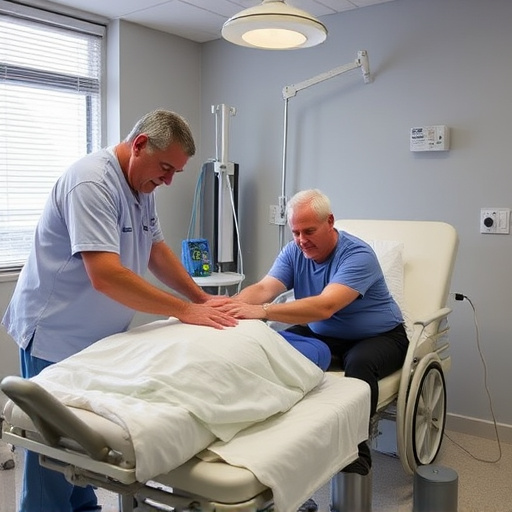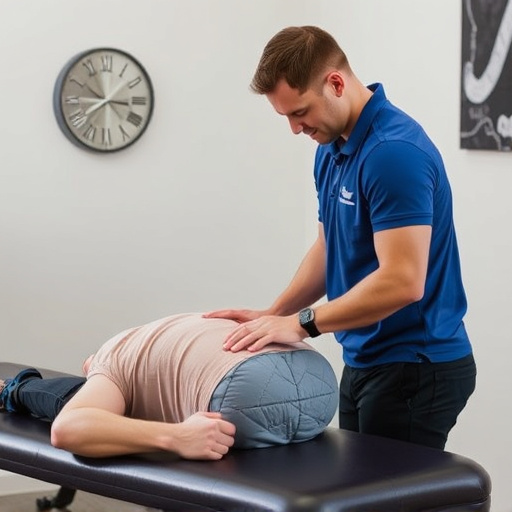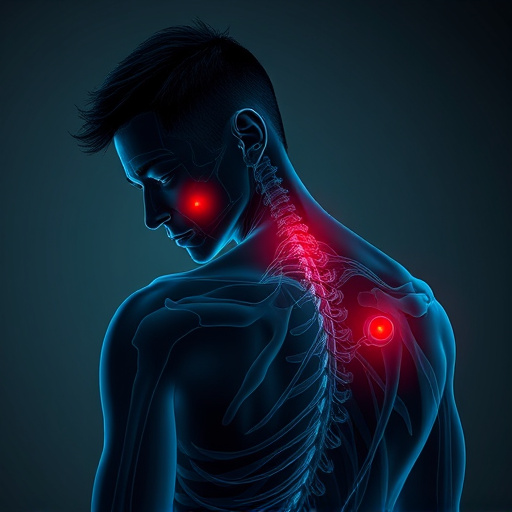Ergonomic injuries in tech workers stem from prolonged digital device use and can be mitigated through proactive measures such as optimized workstations, ergonomic tools, stretching exercises, and specialized therapies like shockwave therapy. Diagnosing these conditions involves patient history, physical exams, and imaging tests to pinpoint root causes. Effective treatment includes symptom relief, healing promotion, and exercises for muscle recovery, with shockwave therapy offering faster recovery times and long-term prevention.
Tech workers face unique health challenges due to prolonged exposure to screens and repetitive tasks, leading to ergonomic injuries. This article explores effective treatments for tech-related strain conditions. We begin by unraveling the causes of these injuries, followed by a comprehensive guide on evaluating and diagnosing specific strain cases. Subsequently, we delve into evidence-based treatment strategies proven to facilitate recovery, emphasizing the importance of early intervention and tailored care plans for optimal ergonomic injury treatment.
- Understanding Ergonomic Injury in Tech Workers
- Evaluating and Diagnosing Strain Conditions
- Effective Treatment Strategies for Recovery
Understanding Ergonomic Injury in Tech Workers

Ergonomic injuries among tech workers have become increasingly common as our reliance on digital devices grows. This type of injury is caused by prolonged exposure to poor workstation setups, such as incorrect chair height or monitor placement, leading to muscle strains and discomfort in the neck, shoulders, back, and wrists. Tech professionals often spend long hours hunched over keyboards, which can result in serious health issues like carpal tunnel syndrome, lower back pain, and repetitive strain injuries (RSIs). Recognizing these risks is the first step towards prevention; tech companies and individuals alike should prioritize ergonomic design and regular breaks to mitigate potential damage.
Effective ergonomic injury treatment involves a multi-faceted approach. This can include adjusting workstation setup, employing ergonomic tools like keyboard supports or wrist rests, and incorporating stretching exercises into daily routines. For more severe cases, therapies such as shockwave therapy for pain may be recommended by healthcare professionals to accelerate healing and reduce inflammation. Addressing these issues promptly is crucial in ensuring tech workers maintain their health and productivity over the long term.
Evaluating and Diagnosing Strain Conditions

Evaluating and Diagnosing Strain Conditions is a critical step in effective ergonomic injury treatment for tech-related issues. When individuals spend extended periods using digital devices, they often develop symptoms such as neck pain relief, muscle recovery, or sciatica treatment difficulties. Healthcare professionals utilize various methods to assess these conditions, including detailed patient history, physical examinations, and specialized imaging tests when necessary.
During the evaluation, doctors may inquire about work routines, posture, and typical activities to identify potential sources of strain. They might also perform specific movements or ask patients to describe their symptoms to pinpoint affected areas. This comprehensive approach is essential in tailoring ergonomic injury treatment plans that address the root causes of tech-related strain conditions.
Effective Treatment Strategies for Recovery

Ergonomic injury treatment strategies play a pivotal role in recovering from tech-related strain conditions. The primary focus should be on alleviating symptoms and promoting healing, while also addressing the root causes that led to the injury. One effective approach is to incorporate exercises designed for muscle recovery and mobility improvement. These can include gentle stretching routines, targeted strength training, and specialized ergonomic exercises tailored to alleviate specific pain points associated with prolonged screen time.
Additionally, shockwave therapy for pain has emerged as a promising treatment option. This non-invasive technique utilizes high-energy sound waves to stimulate the body’s natural healing processes, potentially speeding up muscle repair and reducing inflammation. By combining these strategies, individuals can experience faster recovery times, improved mobility, and long-term prevention of recurring ergonomic injuries related to their tech use.
Ergonomic injury treatment is essential for tech workers facing strain conditions. By understanding the root causes, evaluating symptoms, and adopting effective recovery strategies, individuals can alleviate discomfort and enhance their work experience in today’s digital era. Prioritizing ergonomic principles and proper body mechanics is key to preventing and managing these injuries, ensuring a healthier and more productive future for tech professionals.














